|
-
25th October 19, 10:17 AM
#1
Are these tweed spats?
In my never-ending quest for kilt-appropriate civilian spats, I was looking at some of the vintage photos saved on my computer. As I took a closer look at this photo below, it occurred to me that this chap's spats seem to be made from the same material as his kilt.
Unless I'm just seeing it wrong, it appears that the upper portion around his right ankle has the same horizontal lines as the tweed pattern on his kilt, and I might see the same pattern starting at the very bottom of the portion around his right shoe. This would match the size of his tweed pattern, leading me to believe that he had these made to match the kilt.
Does anyone else see it that way? I can't say I've ever seen another vintage/historical photo where this was done. Spats were typically made from felted wool, and non-felted tweed might not be very practical. (Not that I'm considering doing such; just trying to understand the photo.)
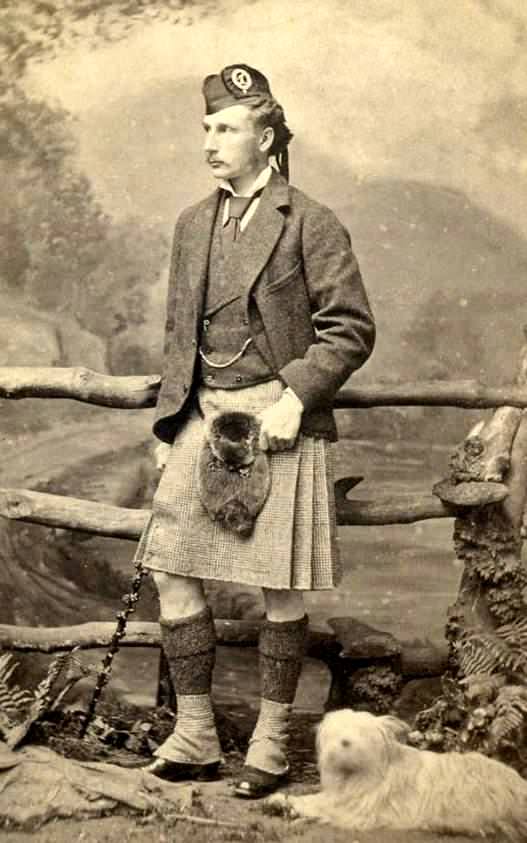
-
-
25th October 19, 10:42 AM
#2
 Originally Posted by Tobus

In my never-ending quest for kilt-appropriate civilian spats, I was looking at some of the vintage photos saved on my computer. As I took a closer look at this photo below, it occurred to me that this chap's spats seem to be made from the same material as his kilt.
Unless I'm just seeing it wrong, it appears that the upper portion around his right ankle has the same horizontal lines as the tweed pattern on his kilt, and I might see the same pattern starting at the very bottom of the portion around his right shoe. This would match the size of his tweed pattern, leading me to believe that he had these made to match the kilt.
Does anyone else see it that way? I can't say I've ever seen another vintage/historical photo where this was done. Spats were typically made from felted wool, and non-felted tweed might not be very practical. (Not that I'm considering doing such; just trying to understand the photo.)

Looks like a match to me. Good eye there.
Maybe he had his tailor put them together when his kilt was made to save money?
Descendant of the Gillises and MacDonalds of North Morar.
-
The Following User Says 'Aye' to FossilHunter For This Useful Post:
-
25th October 19, 01:46 PM
#3
Darn it Tobus, I'm really sorry but it seems that I am butting into quite a few of your posts today. I am really sorry.
The word Tweed refers to a fabric woven of yarns with a distinctive multi-color to them. There are many non patterned Tweeds.
"Tweed is a rough, fabric, of a soft, open, flexible texture, resembling cheviot or homespun, but more closely woven. It is usually woven with a plain weave, twill or herringbone structure. Colour effects in the yarn may be obtained by mixing dyed wool before it is spun.Tweeds are an icon of traditional Scottish and Irish clothing, being desirable for informal outerwear, due to the material being moisture-resistant and durable. Tweeds are made to withstand harsh climates and are commonly worn for outdoor activities such as shooting and hunting, in both Ireland and Scotland. In Scotland (and England along with the rest of the world) Tweed is most associated with the company name "Harris". In Ireland, tweed manufacturing is most associated with County Donegal."
There is a cute story about the name. "The original name of the cloth was tweel, Scots for twill, the material being woven in a twilled rather than a plain pattern. A traditional story has the name coming about almost by chance. Around 1831, a London merchant received a letter from a Hawick firm, Wm. Watson & Sons, Dangerfield Mills about some "tweels". The merchant misinterpreted the handwriting, understanding it to be a trade-name taken from the river Tweed that flows through the Scottish Borders textile area. The goods were subsequently advertised as Tweed and the name has remained since.
Tweed may be woven in a Tartan pattern. So this would properly be called a Tweed Tartan.
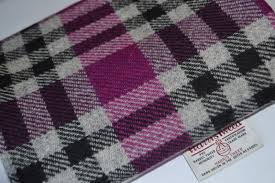
There is also a common misconception that the brand name Harris Tweed denotes a particular type of fabric. Harris Tweed is a tweed cloth that is handwoven by islanders at their homes in the Outer Hebrides of Scotland, finished in the Outer Hebrides, and made from pure virgin wool dyed and spun in the Outer Hebrides. This definition, quality standards and protection of the Harris Tweed name are enshrined in the Harris Tweed Act 1993. There are thousands of different fabrics that carry the Harris Tweed label.
Last edited by Steve Ashton; 25th October 19 at 01:47 PM.
-
The Following User Says 'Aye' to Steve Ashton For This Useful Post:
-
25th October 19, 02:43 PM
#4
 Originally Posted by Steve Ashton

Harris Tweed is a tweed cloth that is handwoven by islanders at their homes in the Outer Hebrides of Scotland, finished in the Outer Hebrides, and made from pure virgin wool dyed and spun in the Outer Hebrides. This definition, quality standards and protection of the Harris Tweed name are enshrined in the Harris Tweed Act 1993.
And using that definition, none of the Harris Tweed produced today compiles as it's not handwoven.
-
-
25th October 19, 03:37 PM
#5
Peter - Directly from the Harris Tweed site - https://www.harristweed.org/harris-t...-harris-tweed/
Bold is mine
"Furthermore a 1993 Act of Parliament underpins the unique status of HARRIS TWEED and decrees that genuine HARRIS TWEED must be made from pure virgin wool which has been dyed and spun on the islands and handwoven at the home of the weaver in the Outer Hebrides of Scotland."
I believe that they define this to mean that the treatment of the wool prior to weaving, and the finishing of the fabric after weaving, may be done by any means. The looms themselves must be human powered. At least one I have seen a photo of is powered by peddling like a bicycle.
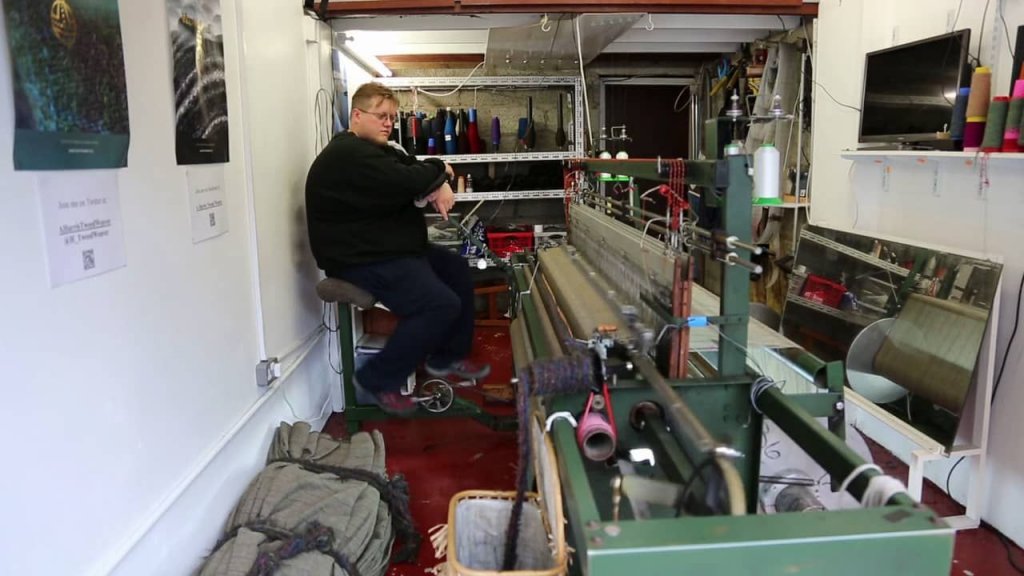
Perhaps not what you and I would consider hand weaving but I guess this fits within their definition.
They certainly don't spin by hand.

Or the dying.
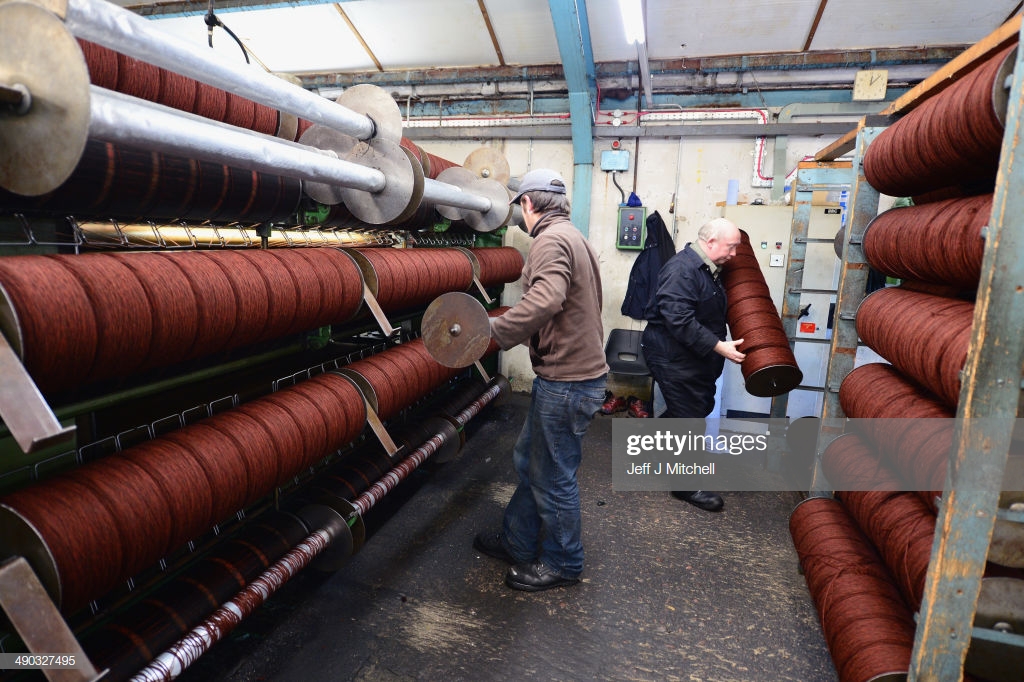
I guess if you want to produce 1.3 million meters a year you can't do it this way anymore.

Last edited by Steve Ashton; 25th October 19 at 04:18 PM.
-
The Following User Says 'Aye' to Steve Ashton For This Useful Post:
-
25th October 19, 11:00 PM
#6
Steve, yes I'm familiar with the Harris Tweed self-promotion blurb and have crossed swordsmwith them about it. The Hattersley loom was the start of the move away from true hand weaving. Until her death the late Marion Campbell was the last of the true hand weavers of Harris Tweed as far as I know. Not only did he hand-weave using a 19th century wooden lòm, she also dyed some of her yarn, hand-spun her weft and walked the finish cloth by hand. I feel extremely privileged to have a jacket and waistcoat made from her cloth.

-
The Following 4 Users say 'Aye' to figheadair For This Useful Post:
-
26th October 19, 10:05 AM
#7
I might be inclined, as the fellow seems to be photographed as 'out for a stroll", to call those 'gaiters' to stop stones entering his shoes.
There's a modern equivalent in "Safari Gaiters" which are an almost identical design....but usually canvas.
“It has never been hard to tell the difference between a Scotsman with a grievance and a ray of sunshine.”
P.G. Wodehouse.
-
-
28th October 19, 08:01 AM
#8
hard to say what those spats are constructed of. They may well be the same fabric as the kilt itself.
In any case, here's another example to throw into the mix:

His spats seem to match his jacket.
-
The Following 2 Users say 'Aye' to Bad Monkey For This Useful Post:
-
28th October 19, 11:23 AM
#9
 Originally Posted by Bad Monkey

hard to say what those spats are constructed of. They may well be the same fabric as the kilt itself.
In any case, here's another example to throw into the mix:
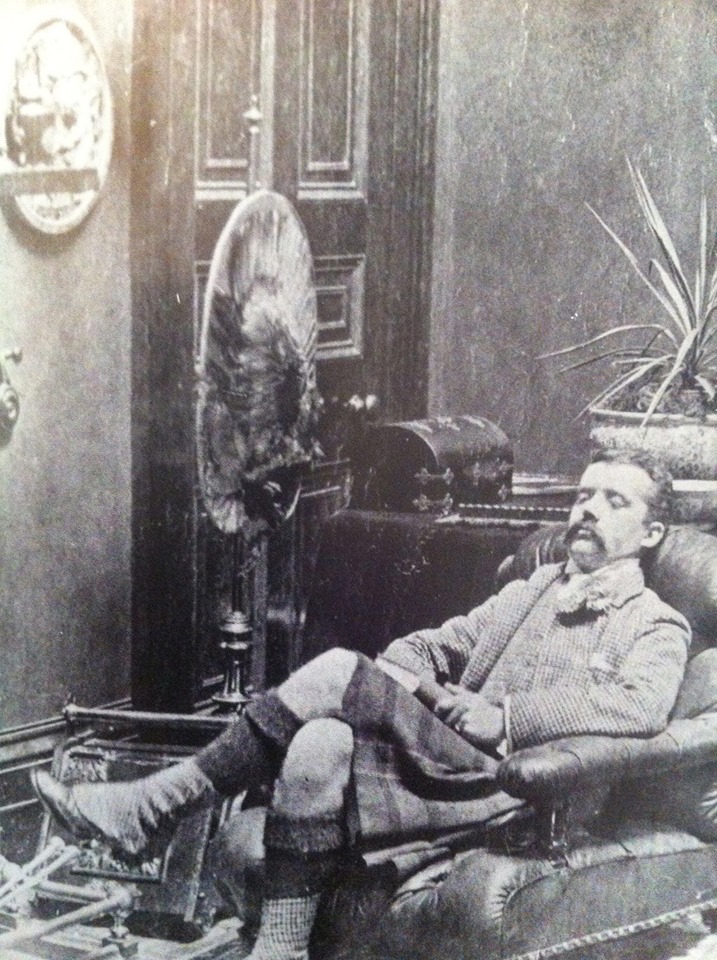
His spats seem to match his jacket.
Thanks, I hadn't ever seen that photo before. It does indeed look like another example of spats being constructed from the same material as the jacket (presumably tweed). So apparently it was the sort of thing that was done, to some degree, but seems to be a bit rare.
-
-
2nd November 19, 05:03 AM
#10
What a great photo Bad Monkey!
Yes Tobus seems to be on to something with the patterned tweed spats.
It would have never occurred to me, in looking over my vintage photos, to check to see if the men's spats matched their kilt or jacket. But there it is.
I've seen grey wool spats, the sort of fabric that jackets might be made from. We have to keep in mind that spats would be worn with dressy clothes too, and it makes sense that they would have rough canvas or tweed spats for the outdoors and fine wool spats for indoors.
On a different issue, look at the button placement on these spats

Last edited by OC Richard; 2nd November 19 at 05:06 AM.
Proud Mountaineer from the Highlands of West Virginia; son of the Revolution and Civil War; first Europeans on the Guyandotte
-
 Posting Permissions
Posting Permissions
- You may not post new threads
- You may not post replies
- You may not post attachments
- You may not edit your posts
-
Forum Rules
|
|


























Bookmarks